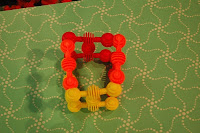 caregiver, parent or grandparent. Before joining in on play, take a few minutes for some spontaneous observations. What you see and hear may offer some possibilities into what can be learned about a child's personality, developmental capabilities, problem solving abilities, interests, knowledge, expressions of culture or reasons behind behavior. These facets of understanding, as mentioned in our last post, offer you as a parent, grandparent or caregiver a fuller and richer picture so that you can be more successful in supporting your child in play.*
caregiver, parent or grandparent. Before joining in on play, take a few minutes for some spontaneous observations. What you see and hear may offer some possibilities into what can be learned about a child's personality, developmental capabilities, problem solving abilities, interests, knowledge, expressions of culture or reasons behind behavior. These facets of understanding, as mentioned in our last post, offer you as a parent, grandparent or caregiver a fuller and richer picture so that you can be more successful in supporting your child in play.*Let's see, for instance, what observation may teach us about a child's personality. While on the Museum floor with a special activity, The Toddler Slide, two important grown-ups each had a chance to observe their child interact and negotiate the shared space of the Toddler Slide. This space is designed for only one child to use at a time:
One boy, visiting with his mother, showed no fear in climbing up the 3-step stairs and sliding down the slide. A more timid visitor, a little girl, staying close to her grandmother, watched the little boy go up and down the slide. When the boy went back to playing nearby with his brother, she approached the slide and with affirmation from grandma, climbed up the stairs and slid down the slide. She smiles at Grandma, pleased with her feat. When the boy returned to the slide, her confidence had increased enough to share the space with him, with a little verbal help from Mom and the Early Childhood Specialist. (Saying, "your turn, her turn" helped define the negotiated space.) The boy's mother brought baby brother over to slide down and big brother gave him a gentle push. Noticing this interaction, the girl went back to watching others on the slide but eventually joined the boy and his brother on the slide.What did Mom and Grandma learn about personality with this observation? While Mom may already know that her son has confidence in his abilities to navigate slides, she may have noted what he's learning about sharing space with others, that is, his willingness to take turns as long as the other person keeps up with his pace. (Note: I have the same expectation. If you go shopping with me - keep up the pace - we're on a mission!) Her gentle reminders can help with his eagerness, until he is developmentally ready to slow down his pace for others.
Now Grandma may already know that her granddaughter is cautious. What she learned today was that her granddaughter uses her cautious behavior to assess the situation before joining in playing with others. Cautious children are typically good observers. This is a trait that can be beneficial when she's older and with her peers, without parental influence.
So next time you're in the Museum, take time to discover something new about your child's personality. What do you learn when you observe children playing at the Museum? Send me your story and we may use it on a future post.
*For more, see Focused Observations by Gaye Gronlund and Marlyn James.








 We couldn't have said it better! Here's a 2/24/10 post from a family who recently visited DuPage Children's Museum. When children experience Museum play through repeated visits, they have opportunities to make new discoveries! As parents and caregivers, it's a joy to sit back and watch these new discoveries and find time to connect with supportive adults. Click
We couldn't have said it better! Here's a 2/24/10 post from a family who recently visited DuPage Children's Museum. When children experience Museum play through repeated visits, they have opportunities to make new discoveries! As parents and caregivers, it's a joy to sit back and watch these new discoveries and find time to connect with supportive adults. Click 




